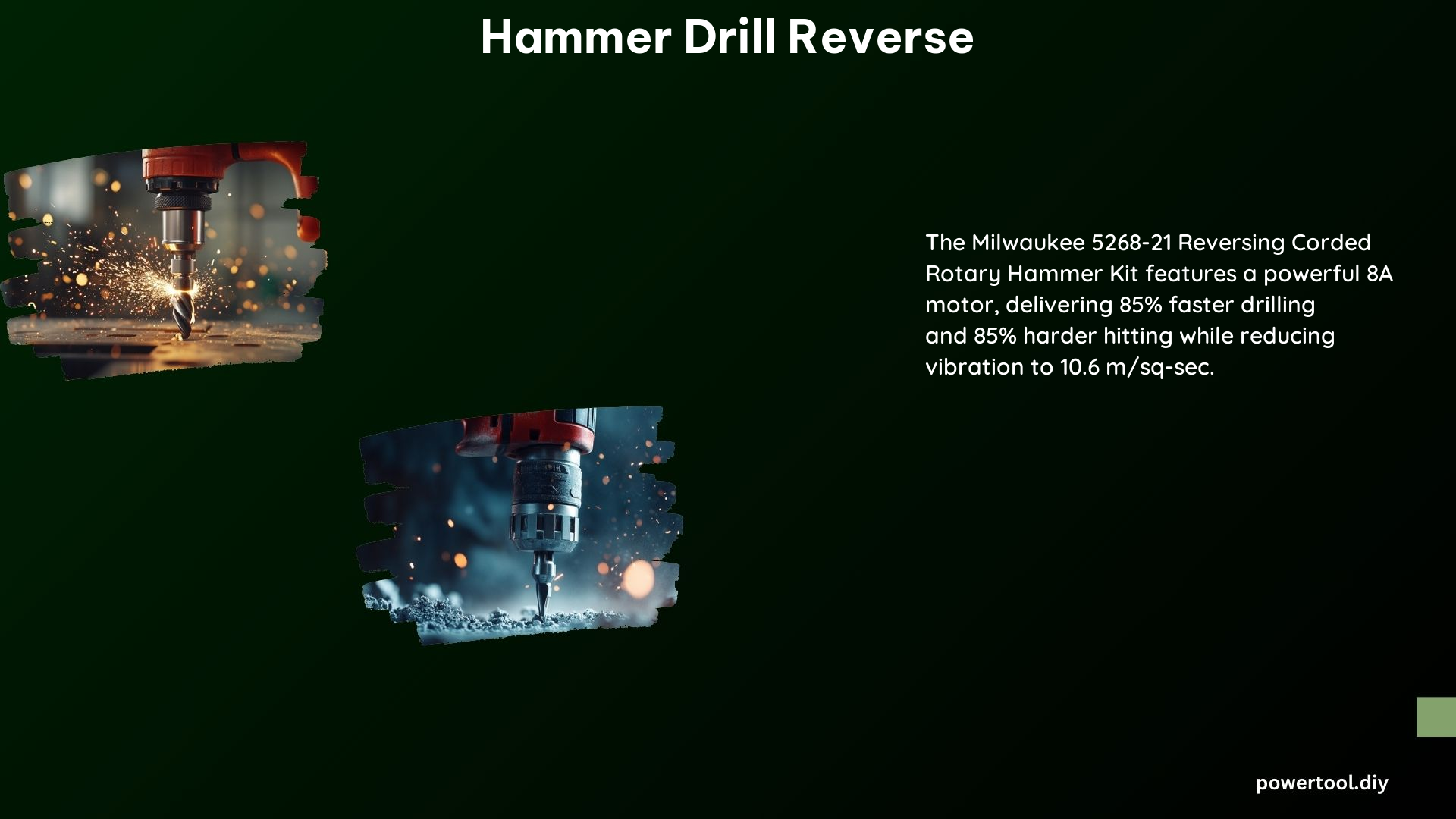Hammer drills are versatile power tools that excel in a wide range of tasks, from drilling holes to breaking through concrete. One of the most valuable features of these tools is their ability to operate in reverse mode, which can be particularly useful when dealing with stubborn, rusted screws. In this comprehensive guide, we’ll delve into the intricacies of using a hammer drill in reverse mode, providing you with the technical knowledge and practical tips to tackle even the most challenging screw removal projects.
Does a Hammer Drill Work in Reverse Mode to Break Loose Rusted Screws?
Absolutely! The reverse mode of a hammer drill can be a game-changer when it comes to removing stuck or rusted screws. The drill’s powerful torque, applied in the opposite direction, can help break the bond between the screw and the surrounding material, making it much easier to extract the screw. This is particularly useful when dealing with old, corroded screws that have become virtually impossible to remove with a standard drill driver.
Can a Hammer Drill Be Used to Remove Screws in Reverse?

Yes, a hammer drill can be effectively used to remove screws in reverse mode. The reverse setting on a hammer drill provides the necessary torque and rotational force to loosen and extract screws, even those that have been in place for a long time. However, it’s crucial to exercise caution and use the correct technique to avoid damaging the surrounding material or breaking the screw itself.
How Does a Hammer Drill’s Reverse Mode Help in Removing Screws?
The reverse mode of a hammer drill works by applying a significant amount of torque in the opposite direction of the screw’s threads. This torque helps to break the bond between the screw and the material it’s embedded in, whether it’s wood, metal, or concrete. Additionally, the hammering action of the drill can create a back-and-forth motion that can further dislodge the screw, making it easier to remove.
Technical Specification of Hammer Drill Reverse
Milwaukee 5268-21 Reversing Corded Rotary Hammer Kit
- 8-amp motor that delivers 85% faster drilling and 85% harder hitting
- Reduced vibration of 10.6 m/sq-sec
- Includes a forward/reverse switch for easy mode selection
- Weighs 12.2 lbs (5.5 kg) for improved maneuverability
- Equipped with a 1-1/8″ (28 mm) maximum drilling capacity in concrete
Forward/Reverse Switch
Many high-quality hammer drills, such as the Milwaukee 5268-21, come equipped with a convenient forward/reverse switch. This feature allows users to quickly and easily switch between the drilling/hammering mode and the reverse mode, making it a versatile tool for a wide range of applications.
DIY Tips for Using a Hammer Drill in Reverse
-
Use the Correct Bit: Ensure you are using the appropriate bit for the screw you are trying to remove. A screwdriver bit or a socket bit may be more effective than a regular drill bit, as they can better grip the screw head.
-
Apply Gentle Pressure: Start with gentle pressure and gradually increase as needed to avoid damaging the surrounding material or breaking the screw. Applying too much force can lead to unwanted outcomes.
-
Utilize the Hammering Action: Take advantage of the hammer drill’s unique hammering action, which can create a back-and-forth motion that can help dislodge the stuck screw.
-
Soak the Screw: Applying a penetrating lubricant, such as WD-40, to the screw can help loosen the bond between the screw and the surrounding material, making it easier to remove.
-
Consider Heat: In some cases, applying heat to the screw head or the surrounding area can help expand the metal and break the bond, making the screw more accessible for removal.
-
Alternate Between Forward and Reverse: Switching between the forward and reverse modes can sometimes be more effective than relying solely on the reverse mode, as the alternating motion can help work the screw loose.
-
Use Caution: Always exercise caution when using a hammer drill in reverse mode, as the high torque can potentially damage the surrounding material or the screw itself if not used properly.
By following these tips and leveraging the power of your hammer drill’s reverse mode, you’ll be well on your way to tackling even the most stubborn, rusted screws with confidence and success.
